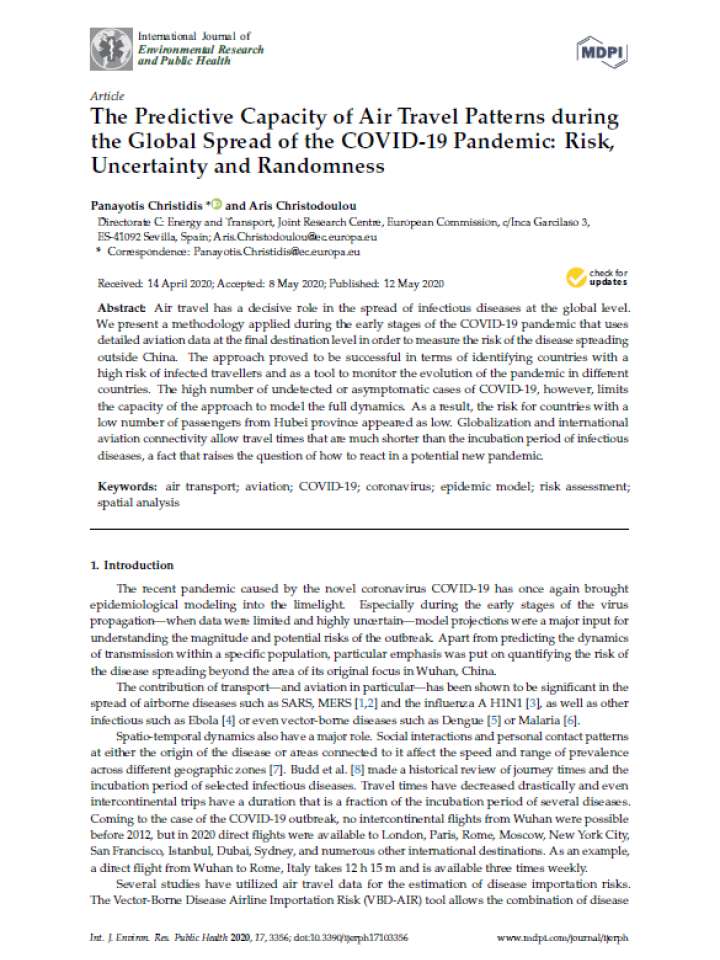The predictive capacity of air travel patterns during the global spread of the COVID-19 pandemic: risk, uncertainty and randomness
Air travel has a decisive role in the spread of infectious diseases at the global level. The authors present a methodology applied during the early stages of the COVID-19 pandemic that uses detailed aviation data at the final destination level in order to measure the risk of the disease spreading outside China. The approach proved to be successful in terms of identifying countries with a high risk of infected travellers and as a tool to monitor the evolution of the pandemic in different countries.
The authors conclude that strict measures can reduce risks significantly but come with the cost of a large social, economic and political risk. Airport controls, especially in the case of novel diseases with unknown symptoms or high asymptomatic shares, can prove inadequate and may even give a false sense of security. International collaboration and exchange of information are important elements in managing risk. While the random effects of disease propagation cannot be controlled, monitoring the situation at the global level using reliable data can significantly improve the reaction of public authorities.
As with any risk assessment approach, the evaluation of the actual risk and the costs of the possible risk mitigation strategies can pose delicate trade-offs. However, keeping in mind that modern aviation permits connecting any two points on the planet in less than 48 h, the chances for new virulent diseases spreading around the world are high and the need for better predictive tools becomes even more urgent.
Explore further
